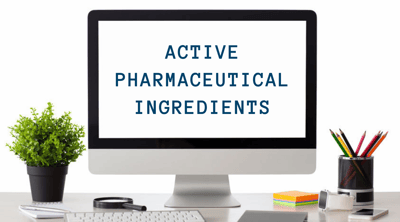Single Window Initiative (SWI) - Survival Guide for importing active pharmaceutical ingredients
The new SWI landscape
The Single Window Initiative means several changes for importers:
- how you need to submit documentation is in flux;
- when that documentation is needed has changed; and
- which documentation is required is also shifting.
 Our goal is to help you understand what is expected for the new “how, when, and what” of SWI requirements relating to the items you ship. These updates guide importers through specific commodities or categories of commodities, and the Participating Government Agencies (PGAs) that are affected.
Our goal is to help you understand what is expected for the new “how, when, and what” of SWI requirements relating to the items you ship. These updates guide importers through specific commodities or categories of commodities, and the Participating Government Agencies (PGAs) that are affected.
How, when, and what
- Single Window Initiative requires all import documentation to be prepared and submitted before the shipment reaches customs.
- SWI is a new way of submitting documentation. All docs will be submitted using the Integrated Import Declaration (IID). Some of the requirements for how you submit are changing. For example: some documents that needed to be faxed now require an uploaded electronic image or just the document number.
- There may be changes to which documents are required under SWI.
- The launch date of SWI is still unknown, but it’s time to get proactive and adjust your workflow to ensure paperwork is ready before you ship.
- The existing Pre-Arrival Review System (PARS) and Release on Minimum Documentation (RMD) service options for PGAs was expected to be decommissioned by April 1, 2019, however the CBSA announced an extension to October 2019, and more recently, a newly extended deadline was announced for April 1, 2020.
Why importers need to know
Under the new SWI, it’s important that you understand which Participating Government Agencies (PGAs) are regulating your products. Some products are regulated by multiple PGAs, and the PGAs regulating your products may have changed under SWI. Additionally, each PGA and the CBSA can issue penalties for incorrect and missing documents. Understanding what information and documentation is needed for clearance will make the clearance process into Canada smoother and more efficient.
Importing active pharmaceuticals under SWI
This month, we’ll guide you through importing active pharmaceutical ingredients under the new Single Window Initiative, which is regulated by:
Health Canada – Active Pharmaceutical Ingredients
Please note: the requirements for active pharmaceuticals are unchanged under SWI.
What has changed is how documentation is submitted. Before SWI, anything that was an active pharmaceutical ingredient would have been presented to CBSA as a paper package. SWI allows importers to transmit documentation electronically with the required data elements.
Requirements and data elements for active pharmaceutical ingredients
- For all subagencies of Health Canada, an importer contact must be provided: contact name, contact phone and/or email address is required for every declaration.
- The Active Pharmaceuticals subagency regulates products with an intended end use of Manufacturing or Industrial Use and requires the importer to provide an establishment license number.
- Active Pharmaceutical Ingredients can be identified through their GS1 Global Trade Identification Number (GTIN GS1). The GTIN GS1 Asset Identifier is not required at time of release, but this information will allow a clearer identification of the product, and will expedite processing in case of referrals.
- Component/ingredient: detailed descriptions of the chemical identity of each ingredient. This information will be used for compliance purposes.
- Ingredient quantity: the unit of measure and the percentage of guaranteed concentration of each ingredient identified.
- Commodity characteristic: brand name of the commodity is not mandatory but should be provided.
- Production/manufacture date: the date in which the product was manufactured is not mandatory but should be provided.
- Commodity lot number: the batch or lot number that the manufacturer assigned to the commodity is not mandatory but should be provided.
For SWI, being proactive is your best strategy—gather all your information and documentation as far in advance as possible. Importers who know the requirements for the products they’re importing, and understand the new processes under SWI, will have a much smoother import experience.
As you adjust to the new requirements and workflow of the Single Window Initiative, we're here to help. Our customs team is ready to help you understand the SWI and its new requirements for your commodities—contact us today!
SWI. It's what we do.

Latest Articles
- CBSA Verification Priorities - January 2026
- 7 ways Canadian importers reduce risk when ordering overseas
- Watch out for these extra charges on your freight bill
- Key differences between duty drawbacks and duty refunds for importers
- Mitigating container shortages and rising shipping prices for ocean imports
